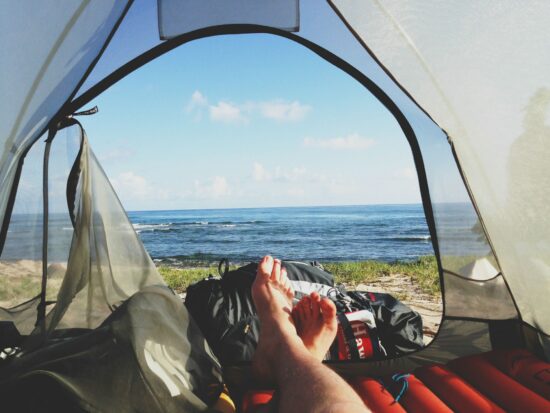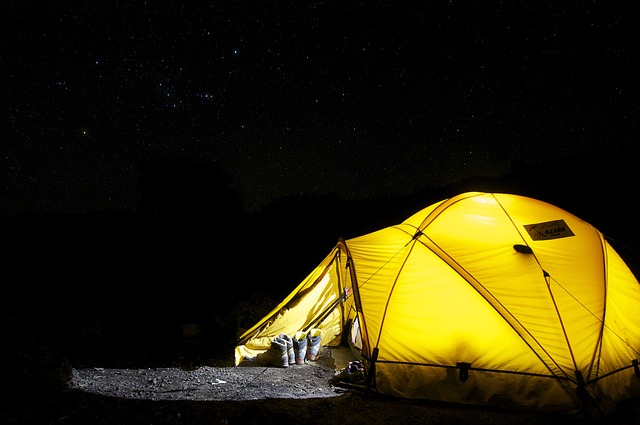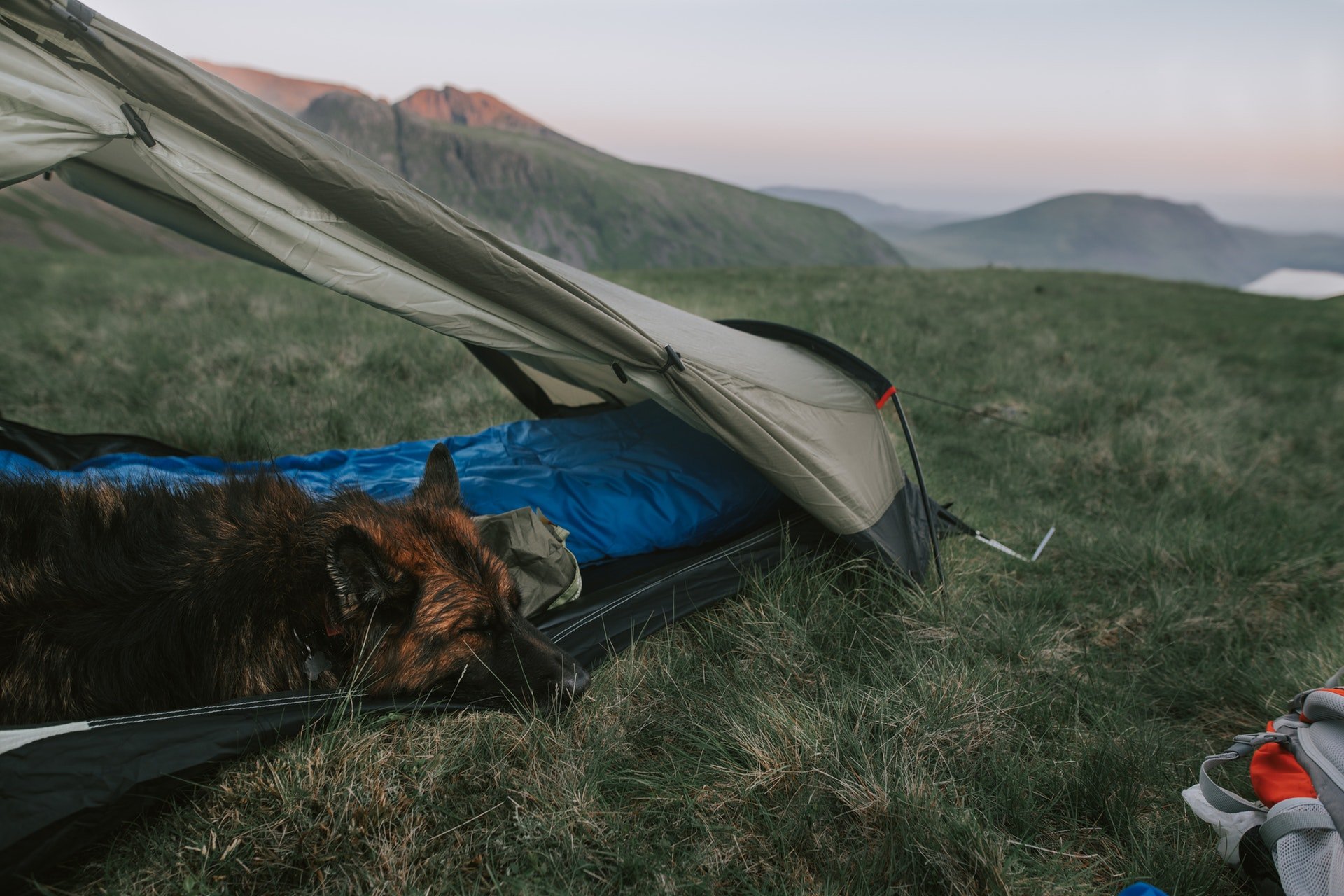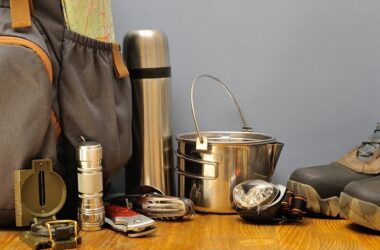So there I was, laying in a tent with my two of my best friends. We sat as the wind blew our 10-man tent standing nearly 7” tall so that it lay barely inches above our noses. That was a crazy night. We set up camp at the opening of a canyon, so of course there was a terrible wind. Luckily, the tent held up. None of us were really that scared. Why? Well because we were in the Taj-Mahal of Tents. It was huge, durable and indestructible!
Well, maybe not indestructible, but certainly sturdy and taken care of. Most of us have stories like that. We probably also all have stories of terrible tents that didn’t take care of us as well. Those stories probably begin with, “We used this crusty, old tent that had broken zippers and twigs still in it.” I would wager that’s probably because the tent was not taken care of. Storing the tent is incredibly important in order to maintain the good condition of a tent. Cleaning a tent is equally as important, so read on and learn how to do both.
8 Tips To Store A Tent
Growing up, my family never really had a tent. Ok, that’s a lie. I think we always had a tent, we just never knew where it was or in what condition it was. That meant whenever I went camping, I always had to rely on other people and their tents. I always felt crummy for calling up people and saying, “Hey, could I sleep in your tent this weekend?” Well, don’t be like me. Instead, you can store your tent well and actually have a usable tent for when you go camping. Follow these 8 tips to know how.
1: Clean the Tent
Imagine unraveling your tent and smelling the dank, musty smell of your last campout aged over the summer. If it were me, I would just sleep outside. That might be a good option anyway. Regardless, as an owner of a tent, your first task will always be to clean the tent. This tip gets overlooked all the time. Often people get home and they are too tired, so they neglect their mountainside mansion in favor of “Netflix ‘n’ sleeping the rest of today.”
Instead, plan out some time to clean the tent. I’m going over this in more detail below, but let me just say this. In high-intensity professions such as the military, law enforcement, firefighting and medical professions, if equipment is not taken care of, people can die. Now, it may not always be that serious when you decide to take the scout troop up for weenies and s’mores, but taking care of your equipment is a habit that you will have to start somewhere. Start with the tent.
2: Store in a Cool, Dry Place
When storing anything, you want to make sure that it is not tampered with while in storage. Barring any bivy bandits, you will probably only have to worry about mold, bugs and mice. So, let’s think like vermin for a second. All these creatures want is a safe place, with food, water and warmth. They aren’t picky, so if it meets even a couple of the criteria, your tent could become a home to a host of pests.
To avoid these freeloaders, make sure to clean your tent, but also store it in a cold, dry place. The cold discourages the growth of mold, and bugs and mice don’t much like it either. Keeping it dry also helps prevent the spread of mold and fungus. So, store your tent in a nice, cold, dry place. Don’t worry about vermin; just worry about storage.
3: Store the Tent Loosely
Although most tents come with some sort of storing bag, it may not be the best choice for storing a tent. Many tents come in compression bags. This is great for hiking or packing. It’s not so great for keeping your shelter in good condition. Avoid compressing the tent during long term storage. The tent is made of fabrics, and they need to breathe and relax. Just like you, tents don’t like to be compressed or stretched for too long.
An old pillow case will work perfectly for this. Just make sure the tent is not being smushed to the size of a gumball. You can stuff the pillow case with the tent or roll, or fold, the tent and then put it in the pillow case. Either way works. From there, you can put the pillow case almost anywhere.
4: Partially Assemble the Tent
Imagine being high-strung all the time. Eventually you would snap and blow something up (please don’t do that). That’s how your tent poles are too. Tent poles are generally metal, plastic, or wooden cylinders that are internally attached by a bungee cord. When un-assembled, the bungee cord gets stretched. Leaving it like this can lead to the cord actually snapping leaving the poles useless. Leave the poles somewhat assembled to lessen the strain placed upon them.
5: Dry your tent thoroughly
This tip resembles the “clean your tent” tip, however, it’s slightly different. Whenever you come home from camping, it’s usually a good idea to set up your tent again (if it is a sunny day) and let the tent air out a little. If you need, use a towel to dry the parts that just won’t air out. Do not put your tent in the dryer. Tents are generally incompatible with washers and dryers.
6: Use Silica Gel Packages
You know those packages that always come in beef jerky bags that say, “DO NOT EAT”? You can put those inside your tent when you store it as a desiccant for the tent. These will dry the tent and suck moisture away. They are cheap, and as I’ve already said, you can find them easily (just make sure you wash them thoroughly).
With these little packets, be very careful to keep them away from children, animals or other things that might eat them inadvertently. They are not edible. They will harm you. I can’t stress this point enough. Please also be very considerate of nature when you go camping. You’ll probably forget these packets are in your tent, and you’ll probably drop them on the ground when you set up camp. Just make sure to pick them up and leave the area without trash.
7: Store the Poles and Fabric Separately
Poles and stakes can damage the fabric relatively easy. To make sure that your tent only has the openings it was designed to have, store the poles and stakes in a separate place. A lot of people get scared doing this because they don’t want to lose any of the poles, stakes or even the tent. Well with the next tip, that won’t happen.
8: Organize Your Storage Space
I used to work in a stained-glass workshop. We had a lot of projects and honestly, it was a madhouse. We couldn’t keep anything organized (even our thoughts) until we took the time to organize the space. Doing that made us much more efficient in building the windows and getting the jobs done.
This same thing holds true for storing your camping gear. You should create a space and section it off for your camping gear. If you need to make labels, make them tasteful and nice to look at so you look at them. Then follow the system. In my house, we have some cabinets outside that work very well for that purpose. Store your tent in the same place as the stakes and poles–just make sure they don’t hurt each other.
How to clean a tent that smells (8 step process)
When you store a tent, you have to clean it. If you use a tent, you should clean it. No matter the situation, the tent should be cleaned. The question, though, is how do you clean a tent, especially one that smells? Well, let’s go through the process together.
1: Gather Materials
Here’s what you’ll need:
- Non-abrasive sponge or rag.
- Mild dish soap that doesn’t have an odor
- Tub or Basin
- Lukewarm water
- Chemical designed to clean outdoor gear
2: Spot Clean the Tent
Use the sponge or rag and gently scrub (not too hard) spots that seem extra dirty. This could include areas that got sap on them, or just parts of the tent that are extra stinky. Only use a small amount of the dish soap. You don’t want to rub away your tent.
3: Fill the Tub
Fill the tub with the lukewarm water (this is usually done right out of the faucet, but if you prefer the waterpump and bucket method, then by all means, go ahead). Then add the gear cleaning chemical. You should look on the bottle to check how much to add. Remember, always follow the directions on bottles of chemicals.
4: Ready the Tent
Unzip all the doors and windows of your tent, and turn your tent inside out. Do this with the rain fly as well. You want to be thorough, so make sure you dump out all the twigs and stuff that always accumulate in the inside of a tent. Do this outside so you don’t have any of it mucking up your bathtub.
5: Submerge the Tent
Put the tent in the water, and let it soak for a while. You will follow the directions on the bottle of the tent cleaning chemical in order to know how long to soak the tent. Don’t let it soak for too long, but if it’s not in there long enough, it won’t get clean.
6: Rinse the Tent
To rinse the tent, you will have to drain the tub and fill it with clean water. Depending on how much soap still hangs onto your tent and fly, you might need to do this multiple times. Rinse repeatedly until the water is clean of all soap.
7: Dry the Tent
Let the tent air dry in a cool shaded area. Hang up or set up the tent. Use soft towels if need be, but do not scrub or be rough. Make sure they are lint free towels. This is so you don’t leave anything on the tent.
8: Deep Clean the Tent
This step is a catch-all for any other cleaning you might have to do. This is where you go and get the extra heavy chemicals (like Mineral Oil, MiraZyme or other enzyme cleaners). Whenever you use these chemicals, follow the directions on the bottles and be careful not to damage your tent.
Storage Solutions for Camping Gear
The hardest part of storing camping gear is the fact that a lot of it can be somewhat awkward. The gear is generally made to be easy to use, but with things like dutch ovens (very heavy), oars and paddles boards (very long), or axes and hatchets (sharp), you have to be very intentional with there you store them.
Luckily, there are many options. If you don’t have space in your own home, find some space in a Neighbor’s home. Hanging things up works very well, but if you prefer the plastic bin approach, places like Home Depot and Lowes can be very accommodating. Even 3M with their hooks that you can attach to almost any wall makes for a great way to store camping gear.
The best tip I found while doing research on how to store camping gear was to personalize the storage space. This means that you make it a shrine to your adventures in the wildlands. Put pictures up of the last camping trip you did. Make the storage space comfortable and nostalgic. It will give you good feelings every time you go in there, and that will help you make more adventures.
Conclusion
Now you are equipped with the correct knowledge to take your adventures to the next level. You know how to store and clean a tent. All you have to do now is go on tremendous adventures. What you learn here can only be applied after you use a tent; otherwise, you leave it in storage. Make excuses to go on a quest. Find a new trail, climb a new mountain or cross a new barrier.
Whatever you do, don’t forget to store your tent correctly and clean it beforehand. You’ll be glad you did. Do you have any tips on how to put your tent away for long-term storage?













